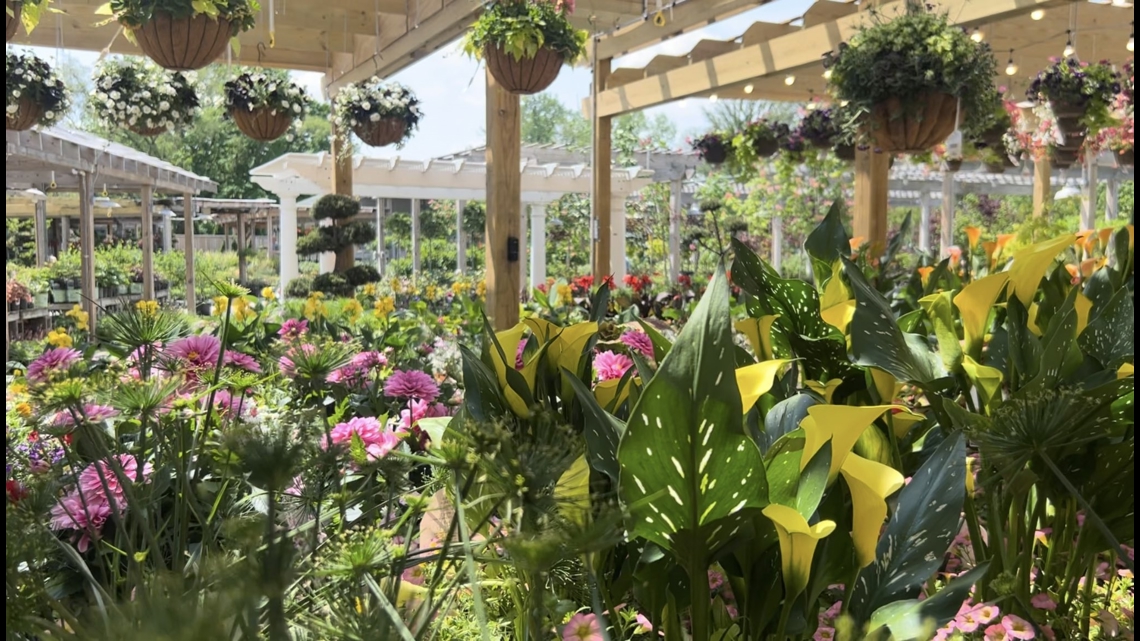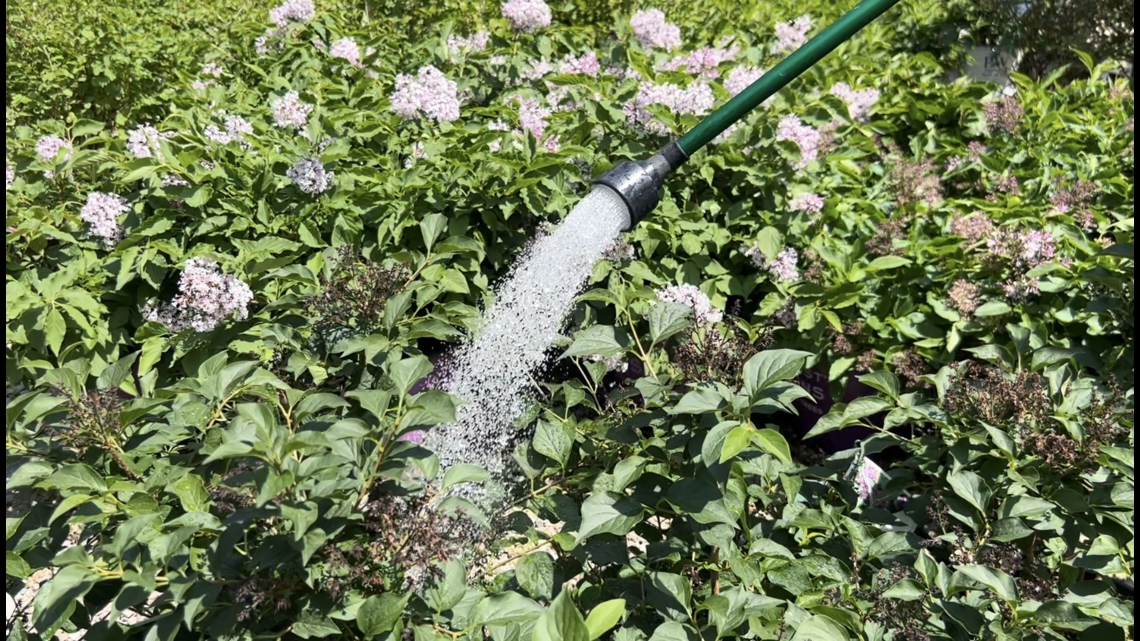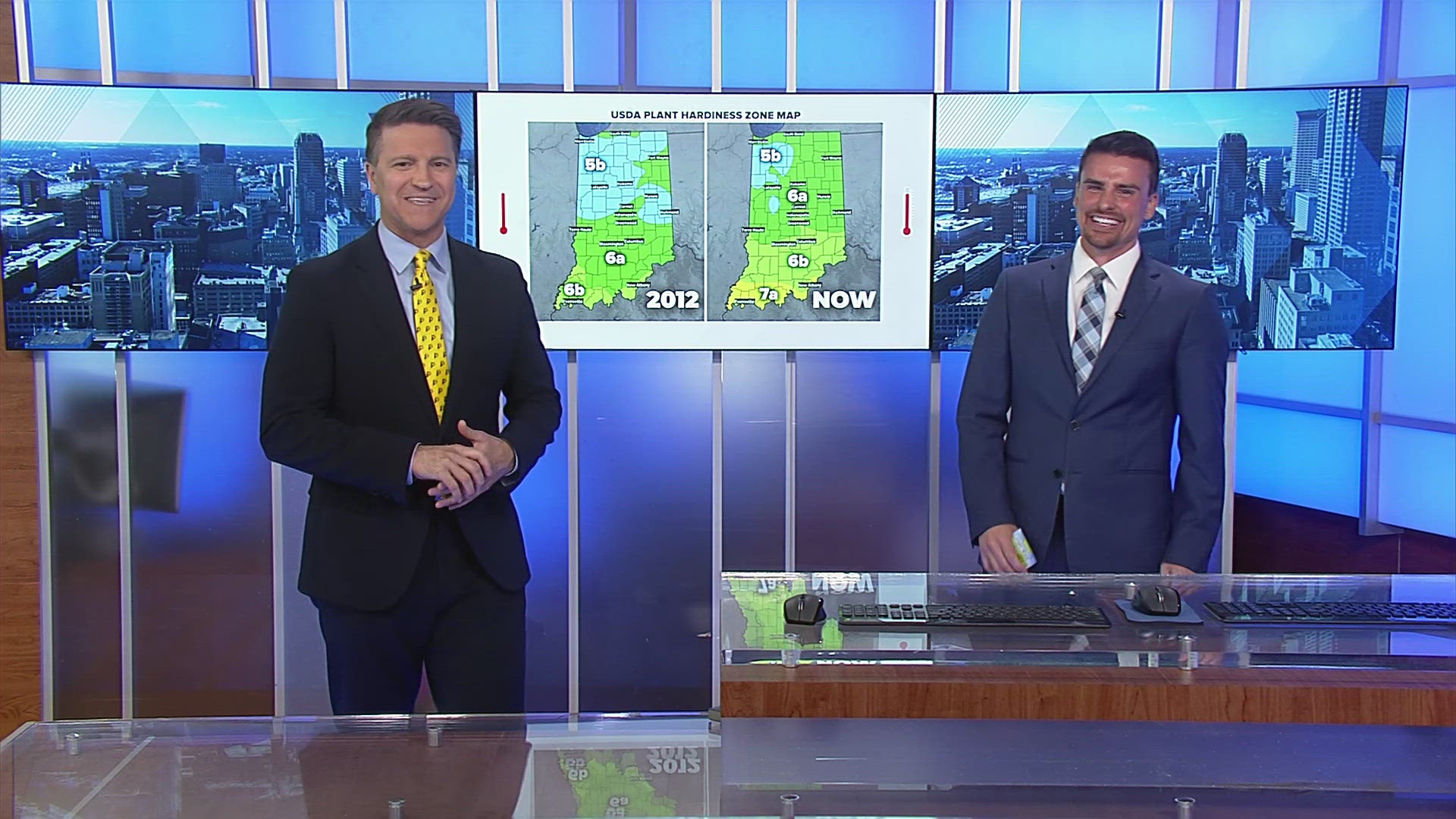INDIANA, USA — Indiana is now mostly a Zone 6 state (both a and b) according to the United States Department of Agriculture's latest plant hardiness zone map. It was updated in November 2023, so this spring is the first planting season it has been active. With slightly warmer winters, as an average, the USDA says some warmer plants may survive a bit more easily, especially in southern Indiana.
Tap HERE to track temperatures across the country with our interactive weather maps.
First, what is the hardiness map?
As the climate differs across the U.S.A. so do the type of plants you purchase and have thrive in your garden or landscaping. The hardiness map created by the USDA is meant for perennial plants, the ones that come back every year. With annuals, just check your local weather forecast to see when is a good time to take it outside. A plants survive is not just based on temperature, but also light, soil moisture, duration of cold air outbreaks, and humidity levels.
Specifically the map is based on average minimum temperatures during the winter over the past 20 years. Some winters will still be colder than the average while others will be warmer.
Indiana's winters have been warmer overall, but when the cold air outbreaks come, they have trended to be severe over the past handful of years. The temperature drop is intense, but we haven't seen the cold air outbreaks last very long.
What is new for the hardiness map?
Indiana has been a zone 5 or 6 for the past 30 years at least. However the new map has a smaller area for zone 5, plus zone 7 has creeped north into southern Indiana.
Zone 5 is colder than Zone 6 & 7.


Indiana is not the only state to change. Many of these plant zones have been pushed farther north by 50-100 miles.
(Note: Scroll down for a county-by-county look to see what zone you county has.)
(5b: -15 to -10 degrees, 6a: -10 to -5 degrees, 6b: -5 to 0 degrees, 7a: 0 degrees to 5 degrees)
Do I need to change my plants?
From a practical sense, there are not big changes on what you can add or remove to your landscaping. We spoke with Pat Sullivan, owner of Sullivan's Hardware and Garden in Indianapolis, to ask him what these changes mean.
Q: What is the hardiness zone map?
A: It's about low temperatures. How it relates to plants, is every plant will have a zone map... so that tells you that it's going to survive throughout the winter months and the summer months for your area.
Q: Should we change what we are buying?
A: No, we see that Indiana has now zones 6a and 6b, but most of us consider us zone 5. I don't see a rush of anybody asking for zone six plants. [One reason why is] because local retail and local nurseries aren't going to do it because we have to guarantee the plants. It gives a person a chance to experiment... maybe they want a crape myrtle, that's generally in zone 6, there's a few in zone 5.
Q: Do we have to worry about the plants we already have?
A: No there's really no change. As far was what you're doing in your lawn now, no.
Overall the change is not big enough to danger your plants. This new classification from the USDA is an update over the past 11+ years. The list of plants that can survive in Indiana, especially near the Ohio River, may slowly go up. However, you still have to be careful because extreme cold air outbreaks can still dive into Indiana.


One more note...
Many plants are not singled down to one zone. In fact there are a range of zones that a plant can survive in. Many of the plants you can buy from local retailers and nurseries are suitable in zones all around in Indiana, so a small change doesn't make an impact for the most part.
The USDA does say that if you are noticing a plant of yours that is struggled through a heat wave, they recommend to keep it well watered.


Indiana county-by-county zone list
(Note: For lists of plants that do well for each zone, tap HERE.)
Within each zone, there is an "a" or "b" which breaks down the zones into 5 degree segments.
Zone 5: little bit more cold-hardy -- temperate climate with minimum winter temperatures ranging from -20 degrees to -10 degrees
Zone 6: temperate climate with average minimum winter temperatures -10 to 0 degrees
Zone 7: temperate climate with average minimum winter temperatures -20 to -10 degrees
- Adams: Zone 6a
- Allen: Zone 6a
- Bartholomew: Zone 6b
- Benton: Zone 5b
- Blackford: Zone 6a
- Boone: Zone 6a
- Brown: Zone 6b
- Carroll: Zone 6a
- Cass: Zone 6a
- Clark: Zone 7a
- Clay: Zone 6a
- Clinton: Zone 6a
- Crawford: Zone 6b
- Daviess: Zone 6b
- Dearborn: Zone 6b
- Decatur: Zone 6b
- DeKalb: Zone 6a
- Delaware: Zone 6a
- Dubois: Zone 6b
- Elkhart: Zone 6a
- Fayette: Zone 6a
- Floyd: Zone 7a
- Fountain: Zone 6a
- Franklin: Zone 6b
- Fulton: Zone 6a
- Gibson: Zone 7a
- Grant: Zone 6a
- Greene: Zone 6b
- Hamilton: Zone 6a
- Hancock: Zone 6a
- Harrison: Zone 7a
- Hendricks: Zone 6a
- Henry: Zone 6a
- Howard: Zone 6a
- Huntington: Zone 6a
- Jackson: Zone 6b
- Jasper: Zone 5b
- Jay: Zone 6a
- Jefferson: Zone 6b
- Jennings: Zone 6b
- Johnson: Zone 6a
- Knox: Zone 6b
- Kosciusko: Zone 6a
- LaGrange: Zone 6a
- Lake: Zone 5b (6a by lakeshore)
- LaPorte: Zone 5b (6a by lakeshore)
- Lawrence: Zone 6b
- Madison: Zone 6a
- Marion: Zone 6b
- Marshall: Zone 6a
- Martin: Zone 6b
- Miami: Zone 6a
- Monroe: Zone 6b
- Montgomery: Zone 5b
- Morgan: Zone 6a
- Newton: Zone 5b
- Noble: Zone 6a
- Ohio: Zone 6b
- Orange: Zone 6b
- Owen: Zone 6a
- Parke: Zone 6a
- Perry: Zone 7a
- Pike: Zone 6b
- Porter: Zone 5b (6a by lakeshore)
- Posey: Zone 7a
- Pulaski Zone 6b
- Putnam: Zone 6a
- Randolph: Zone 6a
- Ripley: Zone 6b
- Rush: Zone 6a
- St. Joseph: Zone 6a
- Scott: Zone 6b
- Shelby: Zone 6a
- Spencer: Zone 7a
- Starke: Zone 5b
- Steuben: Zone 6a
- Sullivan: Zone 6b
- Switzerland: Zone 6b
- Tippecanoe: Zone 6a
- Tipton: Zone 6a
- Union: Zone 6a
- Vanderburgh: Zone 7a
- Vermillion: Zone 6a
- Vigo: Zone 6a
- Wabash: Zone 6a
- Warren: Zone 6a
- Warrick: Zone 7a
- Washington: Zone 6b
- Wayne: Zone 6a
- Wells: Zone 6a
- White: Zone 6b
- Whitley: Zone 6a
The plants you already have will be fine. If you want to try and experiment with a few warmer plants, just to see if they can survive Indiana winters, Sullivan says power to you! You may have some success depending on where you live. However you will likely have to special order plants like that because nurseries don't want to guarantee plants that are risky.
-13News Meteorologist Matt Standridge

